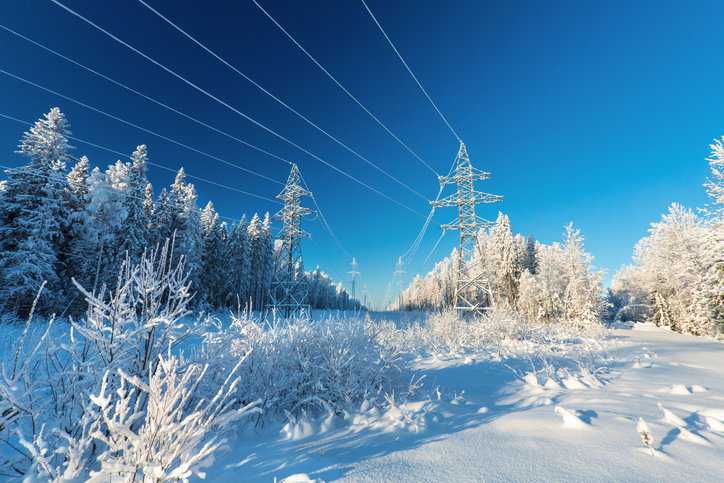The electrical power system of overhead lines enables electricity to be moved quickly and seamlessly. This network is vital in assuring a reliable and regular supply of power to our homes, workplaces, and other amenities. IEC 60652 Ed. 3.0 b:2021—Overhead Line Structures – Loading Tests applies to the testing of supports and structures of overhead lines.
What Is an Overhead Power Line?
An overhead power line is a structure used in electric power transmission and distribution to transmit electrical energy along large distances, serving industrial and residential electrical supplies. It operates as a channel to transfer electromagnetic waves of varying voltage levels across a variety of distances, environments, and landscapes to supply electrical power where it is needed. It consists of one or more conductors (commonly multiples of three) suspended by steel towers or utility poles that are designed to keep the lines suspended at a safe height.
What Is IEC 60652?
IEC 60652:2021 specifies the methods and procedures of testing supports for overhead lines. It details specifications of support tests that verify the design method and inherent assumptions, the method of member detailing, and the quality of fabrication, manufacture, and material. There is no restriction on the type of material used in the fabrication of the supports which may include, but not be limited to, metallic alloys, concrete, timber, laminated wood, and composite materials. IEC 60652:2021 can also be applied to the testing of telecommunication supports, railway/tramway overhead electrification supports, electrical substation gantries, street lighting columns, wind turbine towers, ski-lift supports, etc.
Tests on reduced scale models of supports are not covered by this standard.
Transmission Vs Distribution Overhead Power Lines
There are two types of overhead power lines, which are primarily distinguished by the voltage level at which electricity moves in each stage:
- Transmissions Lines: carry high-voltage “primary” power between generators and substations, where it can be later safely “stepped down” to a lower voltage level using a transformer before being distributed publicly. Transmission lines carry electricity over long distances at high voltages, typically between 115 kV and 765 kV.
- Distribution Lines: are the cables that then carry this decreased ‘secondary’ electricity supply to individuals, businesses, and other premises for everyday use. The voltage of distribution lines (the lines many people see in their neighborhoods) is approximately 13 kV; a typical household runs on 110 volts.
Transmission and distribution are two separate stages or systems on “the grid,” the intricate system designed to generate and carry electricity all the way from the source of its generation to the customers that use it for their daily needs.
Testing Station Requirements for Overhead Line Structures
IEC 60652:2021 maintains that the following requirements should be fulfilled by the test station:
- The layout of the station is generally safe (e.g., in case of structure collapse the control building and the observation area are not located in the danger zone)
- The station has adequate provision to limit the severity of the collapse of the tower in the event of a failure (e.g., back-stays or others)
- All personnel are provided with adequate personal safety equipment, have received proper training, and all procedures has been validated from the safety point of view
- All lifting equipment has been regularly maintained, tested, and certified
- The station pad is clear of loose material during the test
- The rigging equipment is well maintained (e.g., pulley blocks greased), tested, and certified
- The load application devices (e.g., winches, hydraulic rams) do not impart dynamic effects when operated
- The equipment employed for the mechanical testing of the steel is calibrated
- The load measuring devices are calibrated against an instrument which itself is calibrated by a recognized independent calibration organization
IEC 60652 Ed. 3.0 b:2021—Overhead Line Structures – Loading Tests is available on the ANSI Webstore and as IEC 60652:2021 RLV, which contains both the International Standard and its Redline version, showing all changes of the technical content compared to the previous edition.
